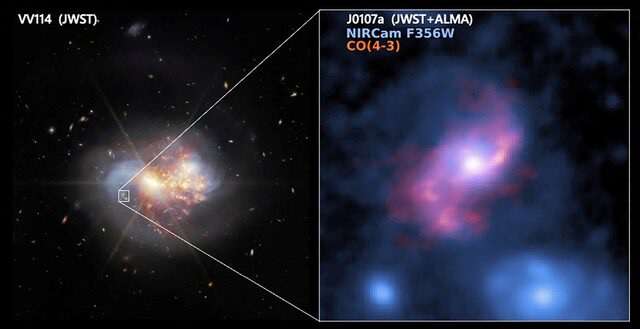Astronomers have discovered a galaxy that originated early in the universe's history. It is strikingly similar to the Milky Way, with its spiral structure and a straight band of stars and gas running through its center. But it is significantly more massive, shedding new light on how galaxies form.
The distant galaxy J0107a was observed as it was about 11.1 billion years ago when the universe was only one-fifth of its current age. The researchers studied the galaxy using the Atacama Large Millimeter/Submillimeter Array (ALMA) in Chile and NASA's James Webb Space Telescope.
J0107a's mass, including its stars and gas, is estimated to be more than ten times that of the Milky Way, and its annual star formation rate is about 300 times higher. However, J0107a is more compact than our galaxy.
During the first few billion years of the universe after the Big Bang, about 13.8 billion years ago, galaxies had chaotic and irregular structures and were much richer in gas than they are today. These factors contributed to extreme bursts of star formation. Although galaxies with regular barred spiral structures are typical today, such examples were uncommon 11.1 billion years ago.
Looking back into the early universe, the James Webb Space Telescope has revealed that spiral galaxies appeared much earlier than previously thought. J0107a is now considered one of the earliest known examples of barred spiral galaxies.




















